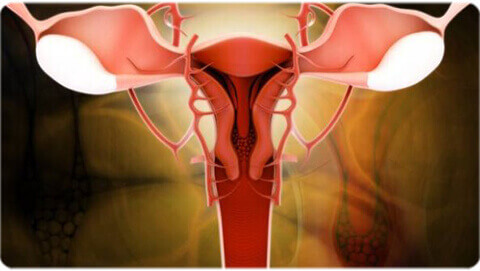Ovarian Cancer
 Ovarian cancer is the second most common type of gynaecologic cancer. The ovaries are composed of three distinct cell types: epithelial cells, germ cells, and stromal cells. Each of these cell types can give rise to different kinds of tumours. 9 out of 10 ovarian tumours originate in the epithelial cells. Epithelial ovarian cancer is the most common, originating in the epithelial cells that cover the surface of the ovaries.
Ovarian cancer is the second most common type of gynaecologic cancer. The ovaries are composed of three distinct cell types: epithelial cells, germ cells, and stromal cells. Each of these cell types can give rise to different kinds of tumours. 9 out of 10 ovarian tumours originate in the epithelial cells. Epithelial ovarian cancer is the most common, originating in the epithelial cells that cover the surface of the ovaries.
A family history of ovarian cancer is the strongest risk factor for this disease. Women with mutations in the BRCA genes have a particularly increased risk. Some factors – such as having surgery to remove the ovaries, the use of oral contraceptives, and tubal ligation have been shown to help prevent ovarian cancer.
OVARIAN CANCER SYMPTOMS
The four symptoms much more likely to occur in women with ovarian cancer than women in the general population are bloating, pelvic or abdominal pain, difficulty eating or feeling full quickly, and urinary symptoms.
Ovarian Cancer DIAGNOSIS & TREATMENT
The two methods currently available to reduce the risk of ovarian cancer from ever occurring are using oral contraceptives or undergoing risk-reducing (prophylactic) surgery to remove the ovary and fallopian tubes.
Ovarian Cancer DIAGNOSIS
Ovarian cancer is usually diagnosed with a pelvic examination and transvaginal ultrasound. A surgical biopsy of the tissue is used to confirm the diagnosis; additional imaging tests may be performed to determine if the disease has spread.
OVARIAN CANCER TREATMENT
The primary treatments for epithelial ovarian cancer are surgery, chemotherapy, and radiation therapy, delivered alone or in combination with another therapy.
The standard treatment for ovarian cancer is surgery for diagnosis, staging (determining the extent of cancer), and tumour debulking, or cytoreduction followed by chemotherapy.
For cancers that appear to be confined to the ovary, the use of less invasive techniques to remove the tumour(s) is adopted. These laparoscopic procedures, performed through small incisions made into the abdomen, can be used to biopsy and stage, and also to determine the extent of a cancer.
Depending on the size and location of the tumour, laparoscopy also can be used to remove cancerous tissue, meaning that a more extensive open surgery can be avoided. Such surgical approaches result in shorter hospital stays, a quicker recovery, and lower costs, and are as effective as conventional surgery. For selected younger patients, fertility preservation (retaining a normal ovary and the uterus) can be considered.
Early-stage ovarian cancer with minimally invasive surgery is equally effective and accurate as staging during open surgery. Our surgeons use the robotic da Vinci Surgical System .
Chemotherapy
To destroy any tumour cells that remain after surgery, chemotherapy is recommended for the majority of women with ovarian cancer. This usually includes a combination of systemic and regional chemotherapy.
Radiation Therapy
Radiation therapy may be given over a period of several weeks. It is rarely used as a primary treatment for ovarian cancer, but is sometimes considered after the removal of a recurrent tumour or in the treatment of a recurrence.
© Copyright 2024. Apollo Hospitals Group. All Rights Reserved.








